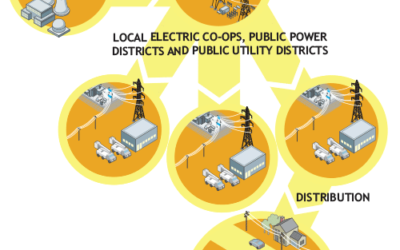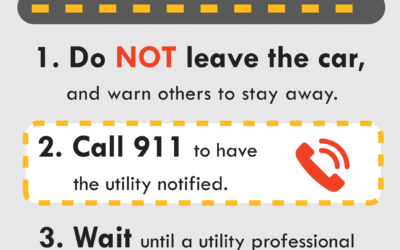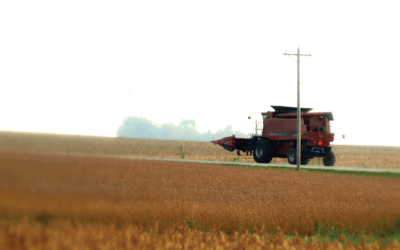
As a not-for-profit utility, Dawson PPD focuses on cost-effectively extending the life of its existing facilities while maintaining adequate levels of safety and reliability. Testing wooden poles helps the District ensure reliability and long life of its equipment, saving customers money in the long run.
Traditionally, pole testing involved a hammer for sounding, a shovel for digging around the base and drilling holes to test for decay. Today, Dawson PPD hires a contractor that uses a scientifically-based system called POLUX as a less-invasive and more accurate form of testing.
POLUX works by sending two, three inch long probes the size of an eight-penny nail into the base of the utility pole. This is the most vulnerable point where decay is most likely to occur on a pole. The probes measure resistance and moisture content of the pole. This information, along with the type of wood the pole is made of and how it was treated are run through a computer program with the pole’s GPS location recorded.
Typically, Dawson PPD uses a Southern Yellow Pine tree for its poles, which should have a resistance of 8,000 pounds per square inch when new. If the measurement falls below 50 percent of the recommended resistance, in this case 4,000 PSI, the pole is marked for replacement.
All of Dawson PPD’s poles are tested every 10 years on a rotating schedule with 10,000-11,000 poles tested annually.
OTHER NEWS
Where your power comes from
Each month, you pay your electric bill to Dawson PPD. But where does that electricity come from? Generally, it’s not produced in your neighborhood — most electricity travels quite the distance from where it’s generated across heavy-duty transmission lines to reach...
What to do if in an auto accident with power lines
Know what to do if in an auto accident with power lines If the car you are in hits a utility pole, your vehicle and the surrounding area can become energized. Even if you do not touch lines or equipment, you can still be killed or seriously injured. Do not...
Make time for safety this harvest season
Harvest season often means putting in long hours, which can make it difficult to stay alert and on the lookout for potential hazards. Here are some safety tips to help farmers make this harvest season a safe one: Safety starts with preparation. Be prepared for...



